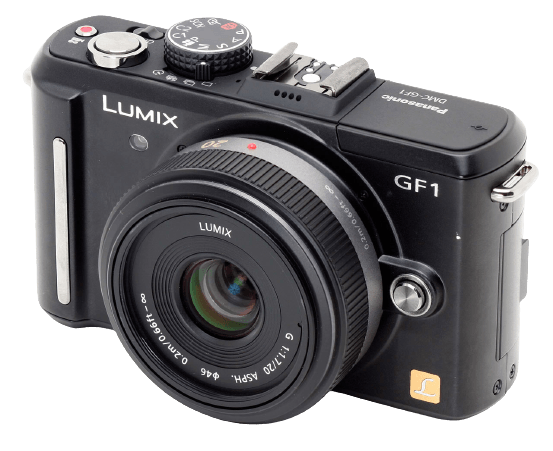Panasonic Lumix DMC GF1 Specs and Scores

The Panasonic Lumix DMC GF1 receives a score of 37/100 for its general specifications. This mirrorless camera, announced on September 2, 2009, and released the same year, had an original launch price of $570. Measuring 119 x 71 x 36mm and weighing 385g (0.85lbs), the GF1 is a compact and lightweight option. However, considering the advancements in camera technology since 2009, the GF1’s specifications may not be as competitive in today’s market. Despite this, it still stands as a reliable camera for those seeking a simple, user-friendly experience.
Panasonic Lumix DMC GF1 Overview and Optics
The Panasonic Lumix DMC GF1 receives a score of 39/100 for its optics. This camera features a 12.1-megapixel resolution and a shooting speed of 3 frames per second. The GF1 is equipped with a CMOS sensor and a Venus Engine HD processor. Its DXOMARK sensor score is 54, and it has a Micro Four Thirds sensor size. The lens mount is also Micro 4/3, but the camera lacks image stabilization. Its aspect ratio stands at 4:3.
Comparing these specifications to today’s market, the Lumix GF1 falls behind in terms of resolution and shooting speed. Modern cameras tend to have higher megapixel counts and faster shooting capabilities. The lack of image stabilization could also be a drawback for those looking to capture sharp, steady images. The Micro Four Thirds system, however, offers a wide range of lens compatibility, allowing users to adapt to various shooting scenarios.
The Panasonic Lumix DMC GF1 has some limitations in its optics performance compared to newer cameras on the market. Its lower resolution, shooting speed, and absence of image stabilization might not meet the demands of today’s photographers. Nonetheless, its Micro Four Thirds system allows for versatile lens options, providing some advantage in specific situations.
Panasonic Lumix DMC GF1 Video Performance
The Panasonic Lumix DMC GF1 receives a video score of 47 out of 100. This camera offers a standard HD video resolution with maximum dimensions of 1280 x 720 pixels. It supports a maximum video frame rate of 60fps, providing smooth and clear footage. However, it lacks built-in time-lapse functionality.
Comparing its video capabilities to current market standards, the GF1 falls behind, as many modern cameras now offer 4K resolution and advanced video features. While its 60fps frame rate is still relevant, the 720p resolution is outdated compared to cameras that provide 1080p or 4K resolution.
Considering the video capabilities, the Panasonic Lumix DMC GF1 may not be the best choice for users focused on high-quality video recording. It is essential to evaluate one’s specific needs and priorities when selecting a camera.
Panasonic Lumix DMC GF1 Features and Benefits
The Panasonic Lumix DMC GF1 scores 36/100 in the features category. The camera comes with a 3-inch screen, with a resolution of 460,000 dots. However, it does not have a touchscreen. It does have a flip screen, which is useful for different shooting angles. Unfortunately, the camera lacks GPS, WIFI, and Bluetooth capabilities.
Comparing these features with current cameras on the market, the GF1 falls short in some key aspects. Many modern cameras come with touchscreens, higher resolution screens, and connectivity options such as GPS, WIFI, and Bluetooth. These features enhance user experience and provide added convenience for photographers.
Considering the GF1’s features, it is clear that the camera is not as advanced as some of its competitors in today’s market. While it does offer a flip screen, the absence of a touchscreen, GPS, WIFI, and Bluetooth make it less appealing to users who prioritize these capabilities in a camera.
Panasonic Lumix DMC GF1 Storage and Battery
The Panasonic Lumix DMC GF1 scores 21/100 for storage and battery, which is a low score compared to modern cameras. With only one memory card slot, it accepts SD, SDHC, and MMC cards. This limitation reduces its storage capacity and flexibility for users. The camera’s battery life is 380 shots, powered by a DMW-BLB13 battery. This battery life is relatively short in comparison to other cameras currently available. Additionally, the GF1 lacks USB charging, further limiting its convenience for users.
Considering these specifications, the Panasonic Lumix DMC GF1’s storage and battery performance is weak in today’s market. Its limited options for memory cards, short battery life, and lack of USB charging make it less desirable compared to more recent camera models.
